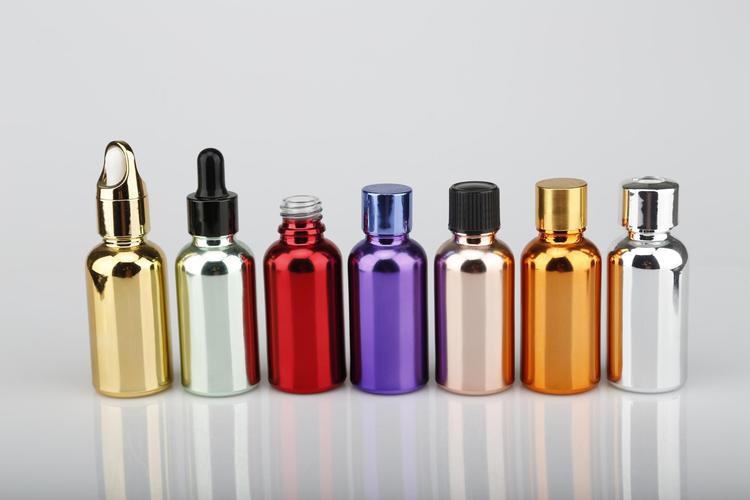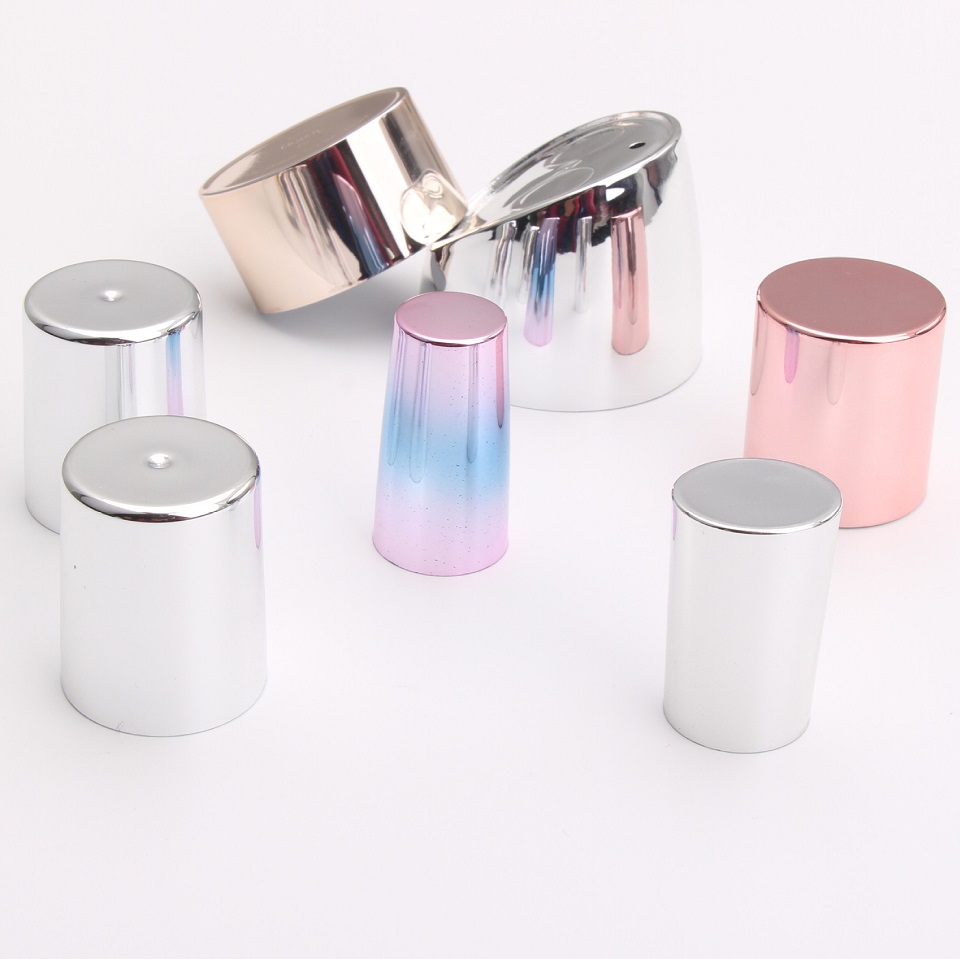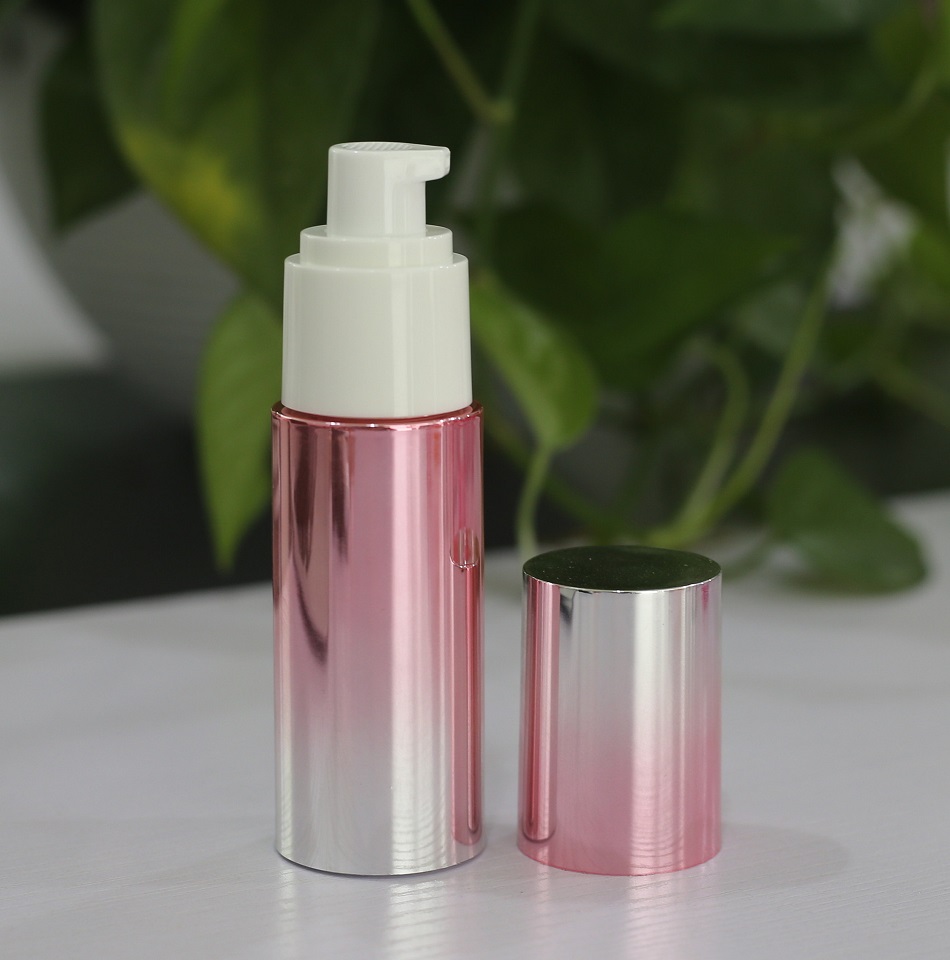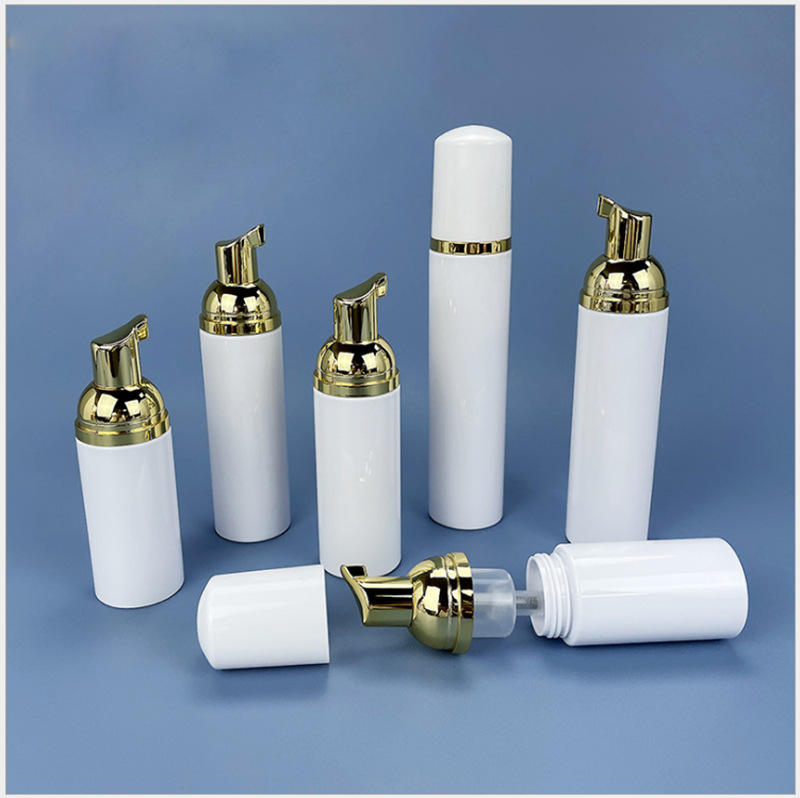

Electroplating, a key process in the cosmetic packaging industry, is widely utilized to enhance the aesthetics and functionality of skin care packaging. It involves the electrical deposition of metal onto the surface of packaging materials such as bottles, plastic bottles, bottles, bottles, and even pump heads to create a glossy, metallic finish that enhances the appeal of skin care products.

Electroplating is a process that uses electrical current to cause metal ions to bond onto the surface of packaging components like glass or plastic bottles. This process can be used to create a metallic finish or add features such as corrosion protection and wear resistance to the bottle caps, pumps, or serum bottles. The result is a high-quality, durable, and visually appealing skin care packaging solution.
Electroplating generally consists of three stages:
Pretreatment: Prepares the surface of the material for electroplating by cleaning and activating it.
Electroplating: The actual process where metal is deposited onto the surface of the packaging material (such as plastic lotion bottles or glass serum bottles).
Post-Electroplating Treatment: Involves processes like polishing or coating to enhance the final appearance and performance of the packaging.
Electroplating serves several key purposes in cosmetic packaging:
Corrosion Protection: Electroplating offers a protective coating that prevents corrosion, which is particularly important for products stored in plastic bottles and exposed to moisture.
Protective Decoration: Through electroplating, bottle caps and serum bottles can receive a decorative metallic finish, elevating the overall appearance and luxury appeal of skin care packaging.
Wear Resistance: A high-quality electroplated surface resists scratches and wear, ensuring the cosmetic packaging remains pristine throughout its lifecycle.
Improved Aesthetic Appeal: Adding a shiny, metallic look to skin care packaging such as lotion bottles and serum bottles can significantly enhance the visual appeal of the product, making it stand out on the shelves.

Water electroplating is a more advanced version of traditional electroplating, used in plastic packaging like lotion bottles or plastic pumps. This process involves submerging plastic packaging parts in an electroplating solution and passing an electric current to form a metallic layer.
Room Temperature Operation: Unlike other plating methods, water electroplating does not require high heat, making it suitable for temperature-sensitive packaging materials like plastic bottles.
Increased Bonding Strength: The water electroplating process results in a stronger bond between the metal coating and the plastic bottles or caps, ensuring durability.
Water electroplating is most effective with materials such as electroplating-grade ABS. This process is commonly used for high-end plastic lotion bottle caps, where a chrome-plated finish creates a sleek, professional look.

Vacuum plating is another widely used method in cosmetic packaging, particularly for plastic and glass packaging. This process involves using a vacuum to deposit a thin layer of metal onto the surface of packaging components.
Enhanced Aesthetics: Vacuum plating creates a smooth, glossy finish, adding a high-end feel to cosmetic bottles such as serum bottles and lotion bottles.
Durable and Thin Coating: Despite being a very thin coating, vacuum plating provides a durable finish that enhances both the and performance of the packaging.
Wide Range of Materials and Colors: From chrome to gold, black, and gunmetal, vacuum plating can create a variety of finishes, making it highly customizable for luxury skin care packaging.
Evaporation Plating: This method uses heat to evaporate metals such as aluminum, silver, and gold, which are then deposited onto plastic packaging like plastic bottles.
Sputtering Plating: Sputtering is used for more durable finishes, often applied to plastic packaging parts like serum bottles to create unique effects such as gunmetal or titanium finishes.
Ion Plating: A high-tech process that creates a very strong and durable bond between the coating and the plastic bottle, often used in high-end skin care packaging.

Gold Plating: High-end skin care packaging such as serum bottles often use vacuum gold plating to create a luxurious, shimmering effect.
Aluminum Plating: Aluminum is a popular choice for lotion bottle caps or bottles due to its lightweight yet durable properties.
The thickness of the electroplated or vacuum-plated layer varies depending on the type of plating used. For plastic and glass packaging, a typical coating thickness ranges from 0.5 to 2.0 microns, which ensures that the packaging maintains its aesthetic appeal while being resistant to wear and tear.
Vacuum plating often requires an additional UV coating to protect the thin plating from damage.
Water plating can achieve slightly thicker layers, often providing more robust protection for plastic bottles and lotion pumps.
| Project | Vacuum Plating | Water Plating |
|---|---|---|
| Coating Thickness | 0.5-2.0 microns | 20-30 microns |
| Materials | Most plastics, metals, glass bottles | Primarily ABS, some plastics |
| Appearance | High gloss, mirror finish | Matte or glossy finish |
| Applications | Premium cosmetic packaging, serum bottles | Plastic lotion bottles, caps |
Electroplating and vacuum plating technologies play a crucial role in enhancing the visual appeal and functionality of skin care packaging. Whether it is a glass bottle, plastic lotion bottle, or serum bottle, these plating methods offer a range of options to create durable, aesthetically pleasing, and high-quality packaging for premium skin care products. These processes help meet the demands of the cosmetic industry, where both beauty and performance are essential for consumer satisfaction.





